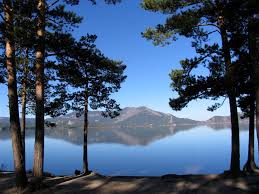 ASTANA – The Tourism Industry Committee of the Ministry of Industry and New Technologies of Kazakhstan has identified five regional clusters for tourism in Kazakhstan. They will be developed through the new Concept for the Development of Tourism to 2020.
ASTANA – The Tourism Industry Committee of the Ministry of Industry and New Technologies of Kazakhstan has identified five regional clusters for tourism in Kazakhstan. They will be developed through the new Concept for the Development of Tourism to 2020.
Marat Igaliyev, chairman of the Tourism Industry Committee, presenting the information in a report to the Mazhilis, said the concept contains a set of measures for developing tourism and associated industries in Kazakhstan. Cultural tourism, including guided tours, is one of the main directions of the concept, as are short breaks or weekend tours. Both aim to boost tourism to sites of historic or cultural significance, as well as to the nation’s nature reserves.
Five main natural, cultural and historical clusters are to be developed first. The Astana cluster includes the city of Astana, the Akmola region and parts of North Kazakhstan, Pavlodar and Karaganda regions. Key natural places of interest are the Burabai, Kokshetau, Buiratau, Karkaraly and Bayan-Aul national parks. Karaganda City is on the list, as well as sites on UNESCO’s tentative World Heritage list, including mounds built by the Tasmolinsk culture, the tombs of the Begazy-Dandybay culture of the megalithic period and Silk Road towns like the Bozok settlement.
The Almaty cluster includes the city of Almaty and part of the Almaty region. Key tourist destinations include the UNESCO World Heritage-listed archaeological landscape of Tamgaly, with its petroglyphss; Charyn Canyon; the Kapshagay Reservoir; the ski area near Almaty and the Ile-Alatau Park; the Zhana Ile tourism centre; the petroglyphs of Yeshkiolmes; the Altyn Yemel National Park, Issyk mounds and Talgar settlement all of which are on UNESCO’s tentative World Heritage list and the Boralday Saka mounds included on the transnational Silk Road World Heritage nomination.
The East Kazakhstan cluster consists of the northern and eastern part of the East Kazakhstan region. Key places of interest are the Bukhtarma Reservoir, Irtysh River, Zhaisan Lake, Katon-Karagay National Park, Markakol Lake, Kalzhir Canyon, the Ridder-Anatai and Ivanovskiye mountains and the city of Semey. There are plans to expand this cluster to include the Berel State Historical and Cultural Reserve and the Alakol State Nature Reserve.
The South Kazakhstan cluster includes parts of the Kyzylorda, South Kazakhstan and Zhambyl regions. Key places of tourist interest are the city of Turkestan, with the World Heritage-listed mausoleum of Khoja Ahmed Yassawi; the medieval Otrar and Otrar oasis ruins; the Karatau State Nature Reserve; the Sairam-Ugamsk State Park; Baikonur Cosmodrome; Kyzylorda, Saryagash and Taraz cities and the Sauran ruins, Arpa-Uzen petroglyphs and Aksu Zhabagly Nature Reserve currently on UNESCO’s tentative World Heritage list. This cluster will also be expanded to include the Merke Turkic sanctuary, the Barsakelmes Nature Reserve, the Zhetyasar oasis and the Siganak settlement.
The Western Kazakhstan cluster will include parts of the West Kazakhstan and Mangystau regions, with places of interest like the Beket-Ata, Shopan Ata and Karaman-Ata underground mosques; the mausoleums of Omar and Tur; the necropolis of the Mangyshlak peninsula; the Bokey Horde monuments; Sherkal Mountain; the Karagiye-Karakol protected areas; Ustyurt State Nature Reserve and the Kenderli resort.


